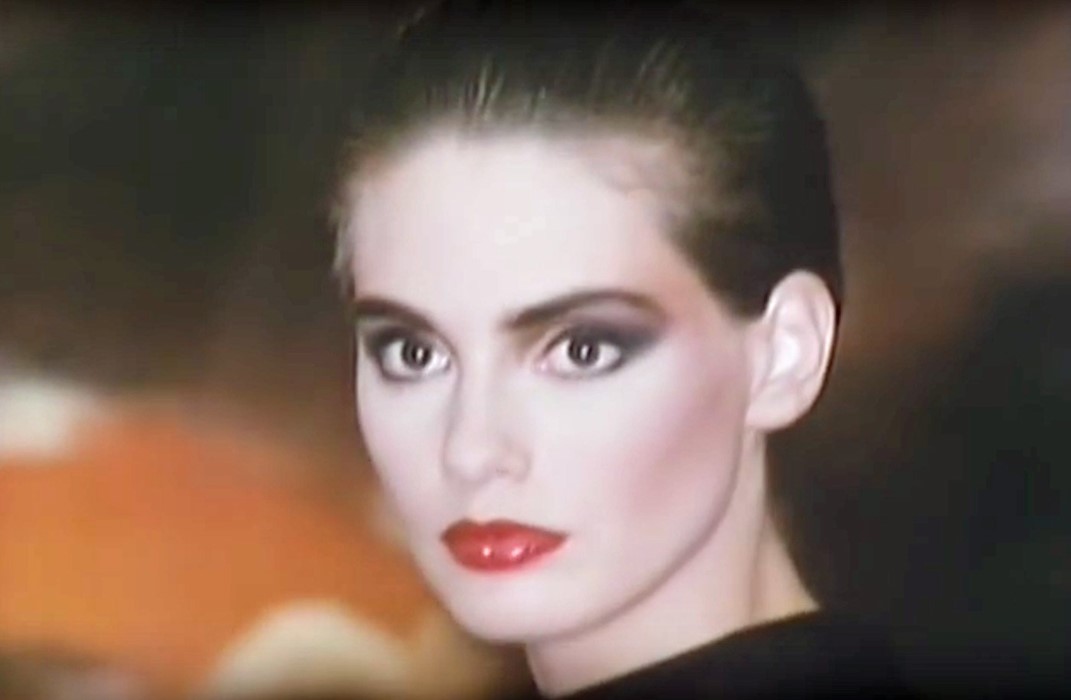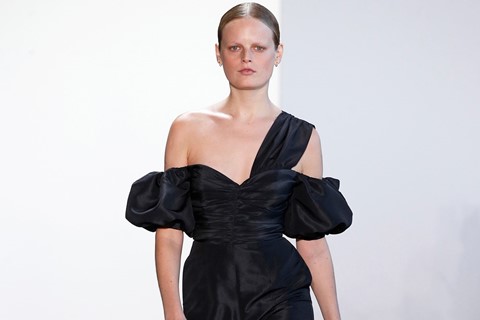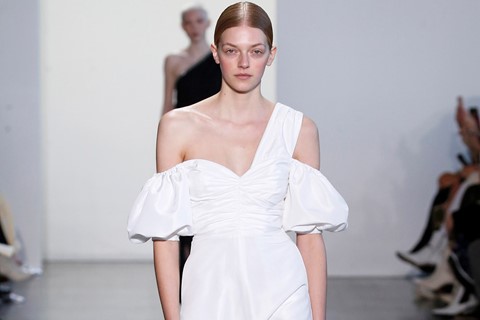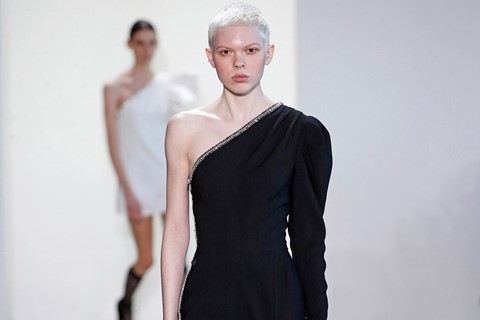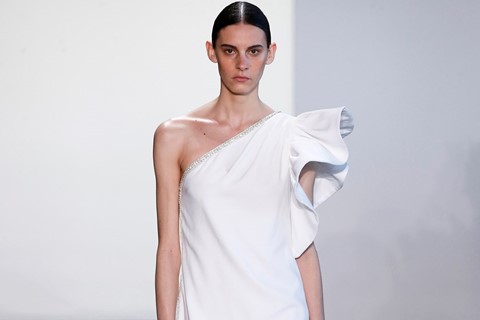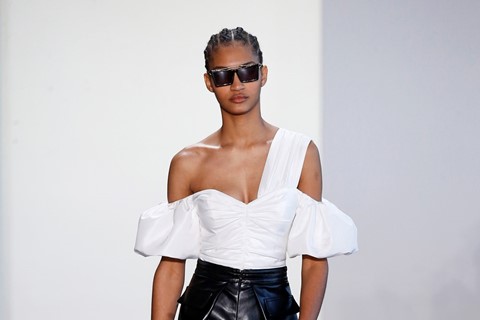Tighter waists, sharper shoulders, and a lot of black: hard chic is taking over. Here, Alexander Fury charts the history of this look – from Adrian dressing Joan Crawford to Robert Palmer’s Addicted to Love Video
There’s been something of a current of ‘hard chic’ emerging in New York this season – tighter waists, sharper shoulders, a lot of black, glossy fabrics. Generally, a graphicism – an edge. It was there, sharply in focus, at the Self-Portrait show, where Han Chong streamlined his silhouettes, showing slick black and white, stripes of crystal and lurex as embellishment, and a fair amount of leather (albeit lace-trimmed). “It feels very French,” he said backstage, “very chic.” Which is, of course, where this whole idea came from in fashion – namely, Yves Saint Laurent. He dressed women in slick trouser suits back in the 1960s – a period when women wouldn’t be permitted entrance to smart restaurants if wearing them – and paved the way for subsequent sartorial liberation.
‘Hard chic’ was an idea coined in the 80s, although it reflected the aforementioned 60s, and earlier still. It dressed women for the cut-throat business world competently, with streamlined beauty. And it’s an idea that has come to define a subset of powerful fashion that nevertheless refuses to surrender femininity. Here then is a dissection of a few of the major moments in the history of ‘hard chic’.
Adrian dressing Joan Crawford, 1930s
Gilbert Adrian was head of costume at MGM for 13 years, creating outfits for some 200 films. Seen by millions across the globe, his clothes were, arguably, more influential than any couturier’s output of the same period, and his fruitful relationship with Joan Crawford made her a Kardashian of her day. Crawford was tall, with broad shoulders – Adrian allegedly referred to her figure as “a regular Johnny Weissmuller,” referencing the actor famous for playing Tarzan in the 1932 film. He dressed her in squared shoulders to exaggerate her natural figure, and a fashion was born, accompanied by razor-sharp tailoring. After years of sinuous bias-cuts and flapper dresses, this vision was new – and decidedly hard.
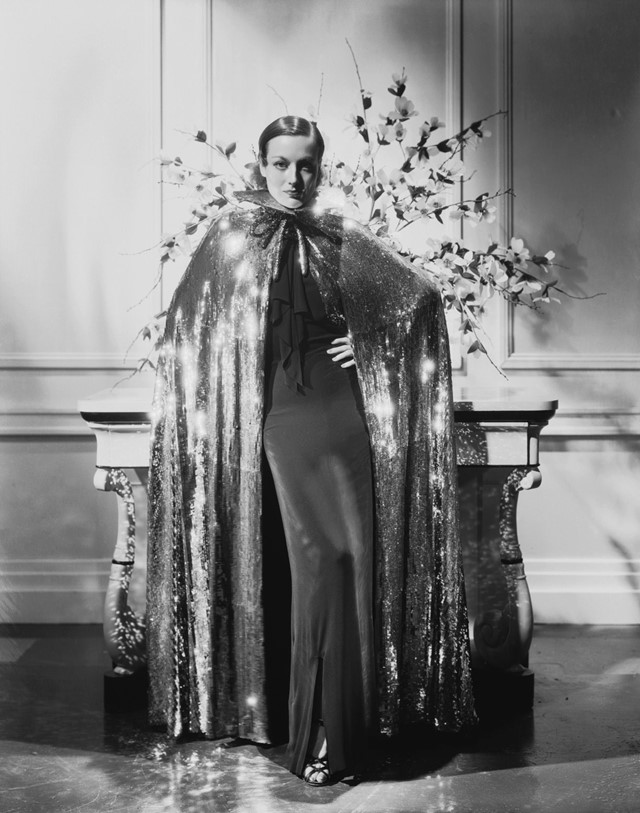
Yves Saint Laurent, Spring/Summer 1971
30 years after Adrian left MGM, Yves Saint Laurent paid homage to ‘hard chic’ in his Spring/Summer 1971 collection – dubbed the ‘Forties’ collection by the designer, but drubbed as a ‘tour de force of bad taste’ by the press. It was, however, as influential as Garbo and Crawford had been in Adrian’s clothes. This show introduced the Saint Laurent shoulder, an emphatic sharp shape to his tailoring (seen in this rare video of the collection) which the designer would use for the rest of his career. It also profoundly influenced the silhouette of the decade to come.
Dynasty, 1980s
Building on those shapes established by Yves Saint Laurent, by the end of the 70s wide padded shoulders had emerged as the favoured design detail among avant-garde Parisian designers. It would take a few years for them to be assimilated into the mainstream – and the designer who managed it was Nolan Miller, who created costumes for the television soap opera Dynasty between 1981 and 1989. He won a Primetime Emmy Award for Outstanding Costumes for a Series in 1984 and, with a weekly budget of an astounding $35,000, devised some of the most extreme visions of ‘hard chic’ – or, perhaps more evocatively, ‘bitch dressing’. His designs were ripped off widely, and Miller himself launched a mass-market line to capitalise. His costumes both epitomised the zenith of 80s conspicuous consumption – but also a powerful vision of the assertive new woman.
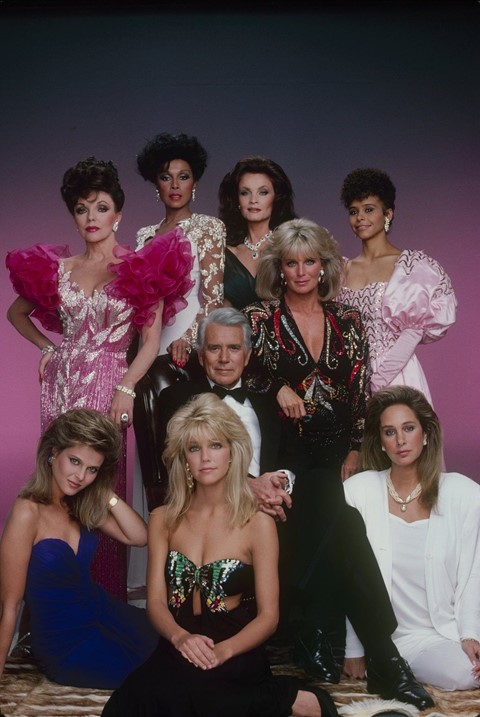
Addicted to Love, 1986
The video the musician Robert Palmer released to accompany his single Addicted to Love is, perhaps, the purest embodiment of the idea of ‘hard chic’. Directed by the fashion photographer Terence Donovan, it features a phalanx of tightly chignoned, heavily made up models (intended, apparently, to look like mannequins) clutching instruments as Palmer’s backing band. “I would simply dress a group of international models in Azzedine Alaïa dresses,” wrote Donovan in his original treatment for the video – which paid attention to hair and make-up, but only specified Alaïa as the fashion. “This designer at the moment produces clothes that make men quite irrational... He understands the linear engineering of a woman’s body unlike any other designer.” Alaïa’s hard chic was, of course, the defining mode of the late 80s and early 90s – but his hardness came with softness, a gentleness and a true femininity seemed into those streamlined, man-eating clothes. Perhaps more ‘power chic’ than ‘hard chic’.
